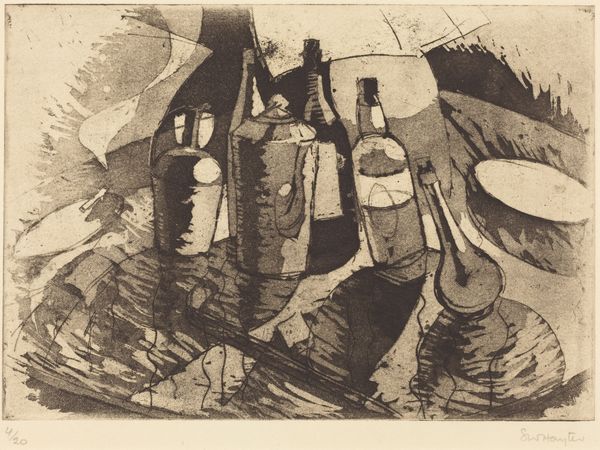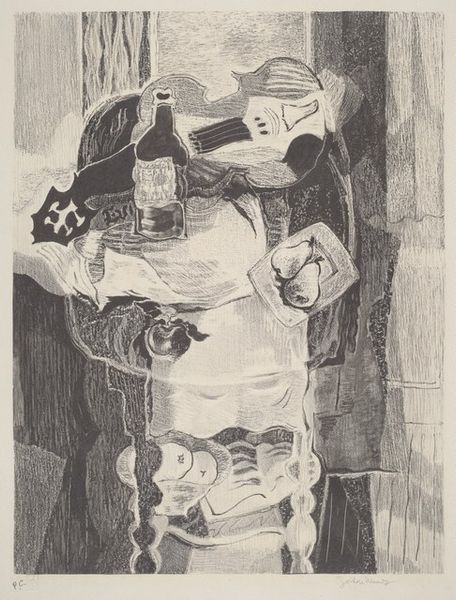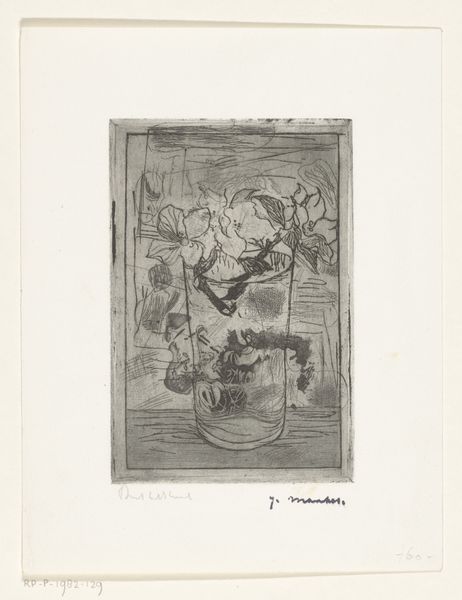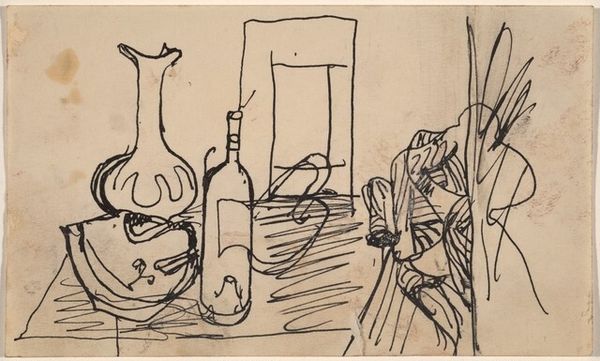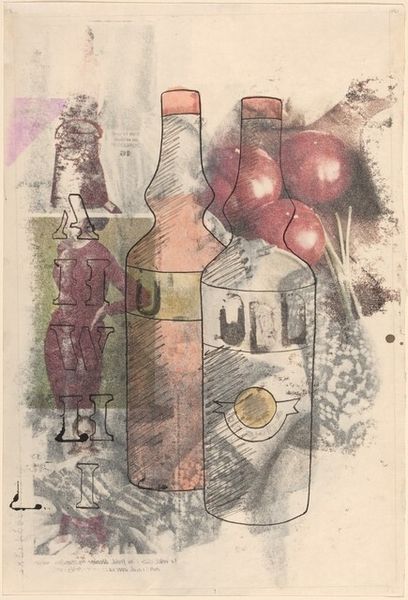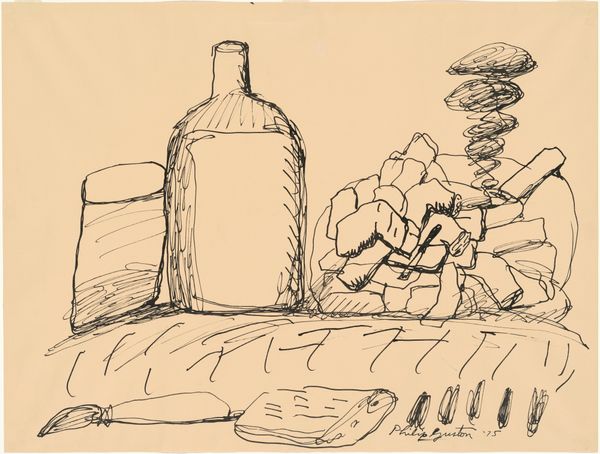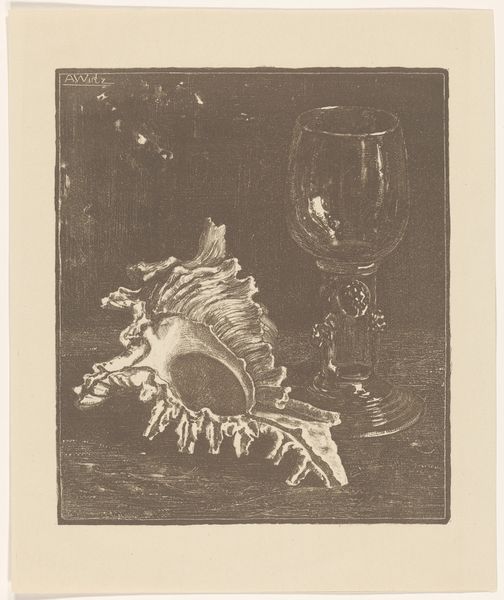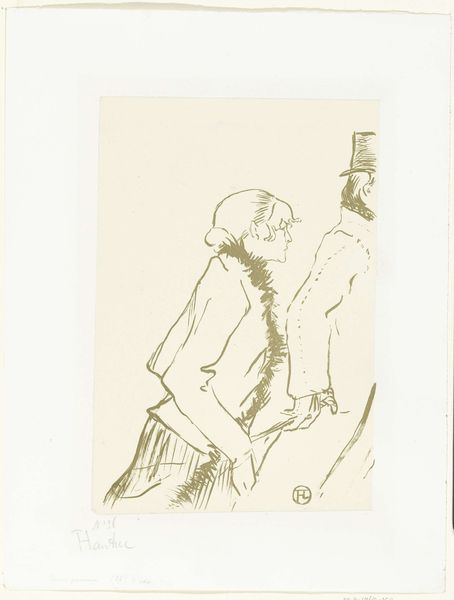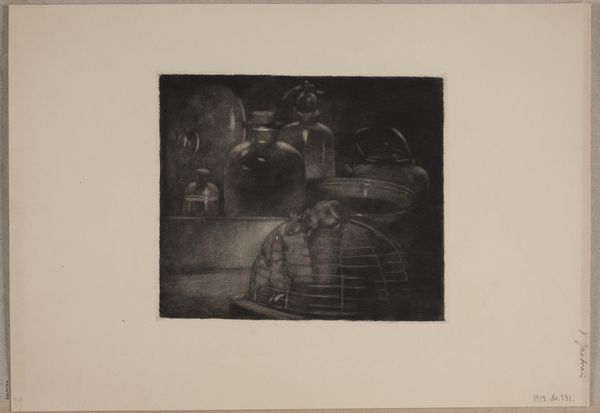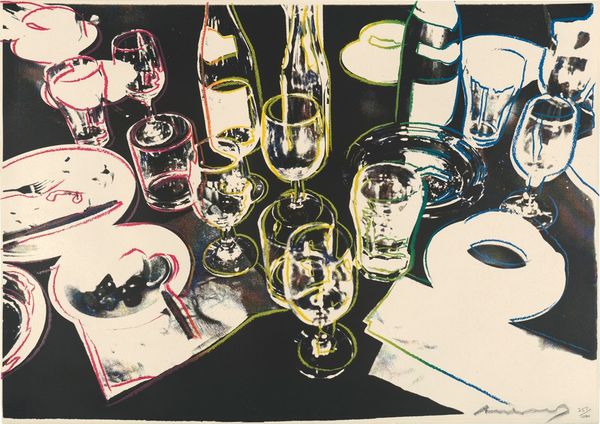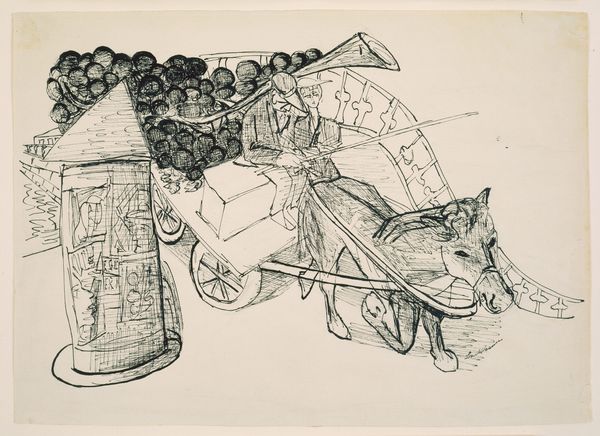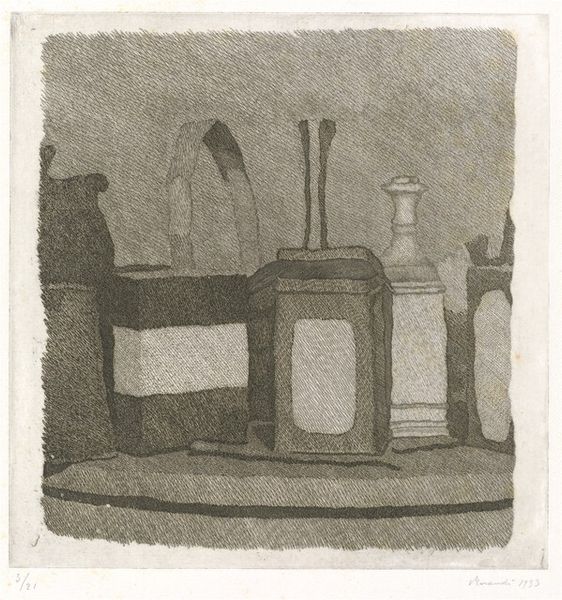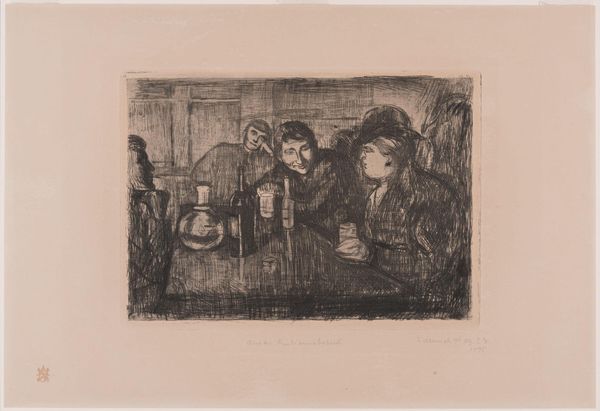
Dimensions: image: 35.56 × 48.26 cm (14 × 19 in.) sheet: 52.07 × 64.77 cm (20 1/2 × 25 1/2 in.)
Copyright: National Gallery of Art: CC0 1.0
Curator: Guy MacCoy’s c. 1950 print, aptly titled "Bottles," strikes a remarkable balance between the familiar and the abstract. Editor: My initial impression is of something…restrained, yet subtly unsettling. The color palette, limited as it is, with that sharp turquoise, amplifies the forms and the underlying geometry. There’s a sense of tension held within the arrangement, like it could collapse at any moment. Curator: That's interesting. The limited palette certainly does contribute to a particular mood. MacCoy, a significant figure associated with Post-Impressionism, had an eye for elevating everyday subject matter to the level of high art. It’s crucial to consider the print's accessibility and place within broader conversations around consumer culture at that time. Editor: True, and when we consider that the medium is a print – almost certainly a woodcut, judging by those lines – this takes on new resonance. Think about the labor involved: carving the wood, applying ink, transferring the image. These weren't pristine vessels produced in a factory; these were the humble contents found within many households. And by choosing to render these recognizable bottles, jars and flasks as an artistic expression, McCoy almost transforms this group into specimens under investigation. Curator: Exactly. He makes us question the purpose of artistic representations of ordinary objects, drawing inspiration from art history as well. The placement of such imagery in galleries challenges established academic notions of appropriate subject matter. It seems part of the cultural shift away from glorifying elite figures towards representing common life in mid-century America. Editor: And, because MacCoy focuses primarily on geometric shapes in each form—particularly cylindrical or rectilinear—there emerges what one might see is both beautiful simplicity…and maybe mass manufacturing? Curator: Yes, the reduction to basic geometric shapes does evoke the rise of mass production, further engaging the public and political consciousness of that time. I see that as pushing boundaries around labor relations by democratizing fine art subjects through popular design aesthetics prevalent in commercial products we engage in day to day. Editor: I hadn't considered that angle! The tension created between these ideas really enlivens this humble piece of material. It feels grounded in process, and somehow subversive, when you consider who held all this power back then. Curator: Seeing it through your lens highlights precisely the intersection of materiality, making, and the challenging socio-political context this print emerges from. It brings fresh depth to what might at first appear like a very subdued, even quiet composition.
Comments
No comments
Be the first to comment and join the conversation on the ultimate creative platform.
